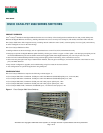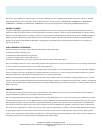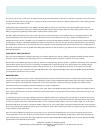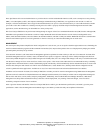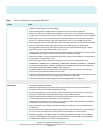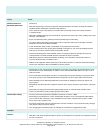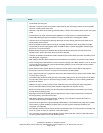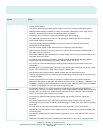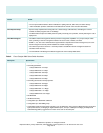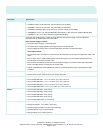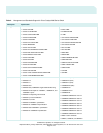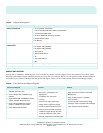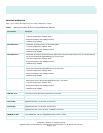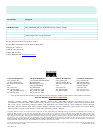
© 2005 Cisco Systems, Inc. All rights reserved.
Important notices, privacy statements, and trademarks of Cisco Systems, Inc. can be found on cisco.com.
Page 9 of 16
Feature Benefit
across multiple switches and ports simultaneously.
• The user-personalized interface allows modification of polling intervals, table views, and other settings.
• • Alarm notification provides automated e-mail notification of network errors and alarm thresholds.
Cisco Express Setup
• Express Setup simplifies initial configuration of a switch through a Web browser, eliminating the need for
terminal emulation programs and CLI knowledge.
• The Web interface helps less-skilled personnel quickly and simply set up switches, thereby reducing the cost of
deployment.
CiscoWorks Support
• CiscoWorks network-management software provides management capabilities on a per-port and per-switch
basis, providing a common management interface for Cisco routers, switches, and hubs.
• SNMP v1, v2c, and v3 and Telnet interface support delivers comprehensive in-band management, and a CLI-
based management console provides detailed out-of-band management.
• Cisco Discovery Protocol Versions 1 and 2 help enable a CiscoWorks network-management station for
automatic switch discovery.
• The CiscoWorks LAN Management Solution supports the Cisco Catalyst 2960 Series.
Table 2. Cisco Catalyst 2960 Series Switch Hardware
Description Specification
Performance
• 32 Gbps switching fabric
• Forwarding bandwidth:
– Catalyst 2960-24TT: 4.4 Gbps
– Catalyst 2960-24TC: 4.4 Gbps
– Catalyst 2960-48TT: 6.8 Gbps
– Catalyst 2960-48TC: 6.8 Gbps
– Catalyst 2960-24TC: 24 Gbps
• Forwarding rate based on 64-byte packets:
– Catalyst 2960-24TT: 6.5 Mpps
– Catalyst 2960-24TC: 6.5 Mpps
– Catalyst 2960-48TT: 10.1 Mpps
– Catalyst 2960-48TC: 10.1 Mpps
– Catalyst 2960G-24TC: 35.7 Mpps
• 64 MB DRAM
• 32 MB flash memory
• Configurable up to 8000 MAC addresses
• Configurable up to 255 IGMP groups
• Configurable maximum transmission unit (MTU) of up to 9000 bytes, with a maximum Ethernet frame size of 9018
bytes (Jumbo frames) for bridging on Gigabit Ethernet ports, and up to 1998 bytes for bridging of Multiprotocol
Label Switching (MPLS) tagged frames on both 10/100 and 10/100/1000 ports



